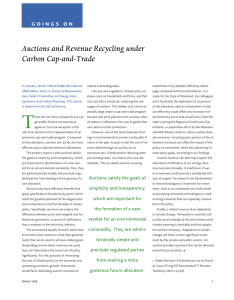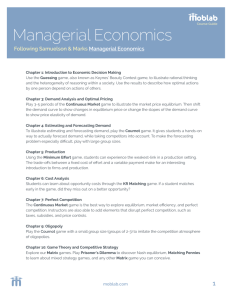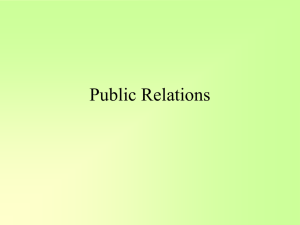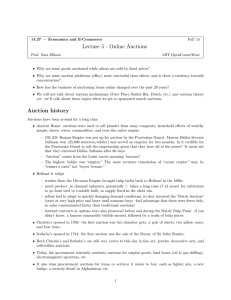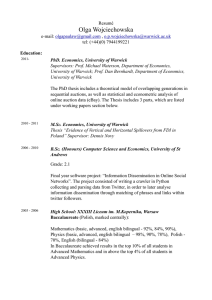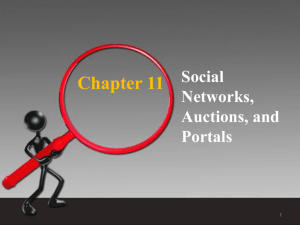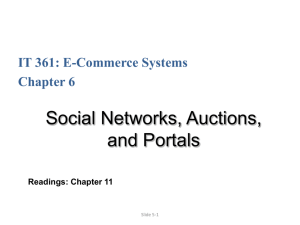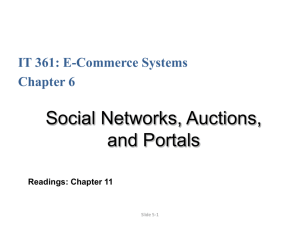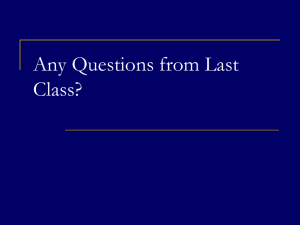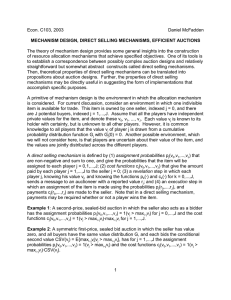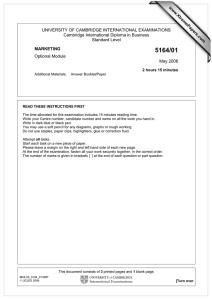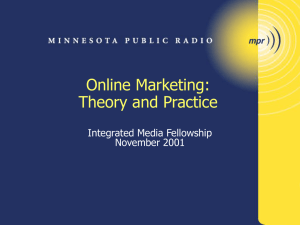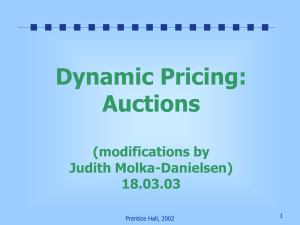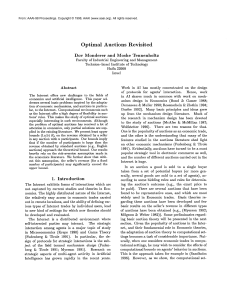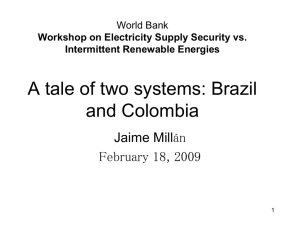Agent Based Models Presentation
advertisement
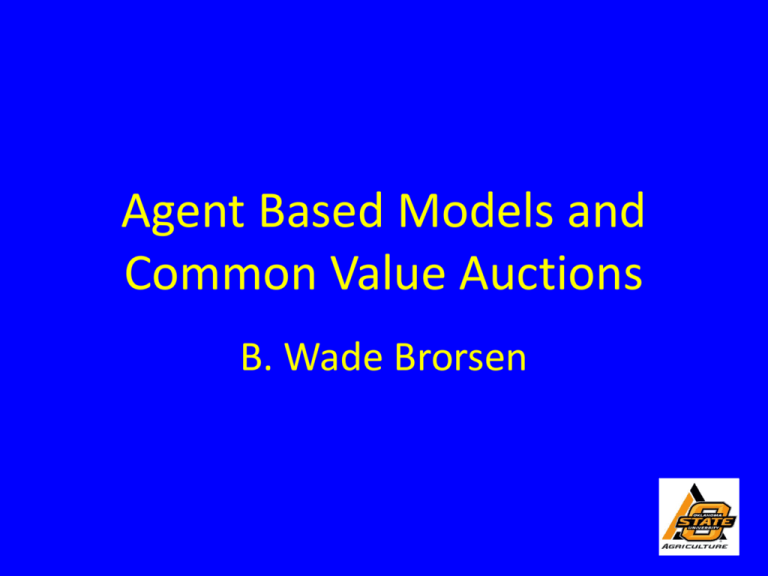
Agent Based Models and Common Value Auctions B. Wade Brorsen Agent based models (ABM) simulate the actions and interactions of autonomous agents to determine effects on the system as a whole. • Agent-Based Model: Bottom-up Method – Carry out the experiments with programmed agents – Interactive agents with simple rules Initial condition Observed Market Equilibrium 3 Applications of ABM • • • • • Biology Land Use Urban Planning Oligopoly Auctions Contrast with Traditional Theory Fully Rational a. Maximize profit b. Maximize expected utility Boundedly Rational Do what worked last time Game Theory Small number of players Industrial organization International trade Nash equilibrium Oligopoly Models Cournot Bertrand Stackelberg Auctions Private value Common value Affiliated value Meyers (1988) Matagorda County rice auctions Bids increased as # buyers increased Winner’s curse Bid shading Relevant Tools to Study Auctions Theoretical Human experiments Agent-based models Agent Based Models Computerized agents Follow specific rules Simulation or optimization? Stochastic Global Optimization Evolutionary Algorithms Genetic algorithms Particle swarm Random Restarts Global Best Local Best 1 Select New strategy particle 1 Local Best K Agent 1 Strategy 1 Profit Strategy K Market 1 particle 1 particle K Select New strategy Market K Agent 2 Local Best 1 particle K Local Best K 13 Global Best Convergence to Equilibrium Software • Many canned packages - Mostly land use • We use Java • Can be slow Revisiting Mandatory Price Reporting Act of 1999 Using an Agent-Based Model Objective • Develop an agent-based common-value auction to determine expected effect of Livestock Mandatory Price Reporting Act on packer market power MPR Literature • Previous theoretical work disagrees • Recent econometric work shows beef packers’ market power increased after MPR Theoretical Framework • Previous theoretical work follows Cournot theory • Auction model is closer to how cattle are actually purchased Auction Structure • First-price common-value auction with a reserve price • Common value for the packers is 0.5 Post MPR Results Full Noise Seller Reduced Noise Buyer Reduced Noise Average winning bid price 0.02 0.11 0.06 Reserve price -0.31 -0.08 -0.43 Buyer 1 expected revenue 0.17 0.10 0.20 Buyer 2 expected revenue 0.16 0.10 0.18 Seller expected revenue 0.01 0.06 0.06 Category Application to Cattle Sales • Reducing either the seller’s or buyers’ uncertainty through USDA-AMS reports created by MPR benefits the seller


